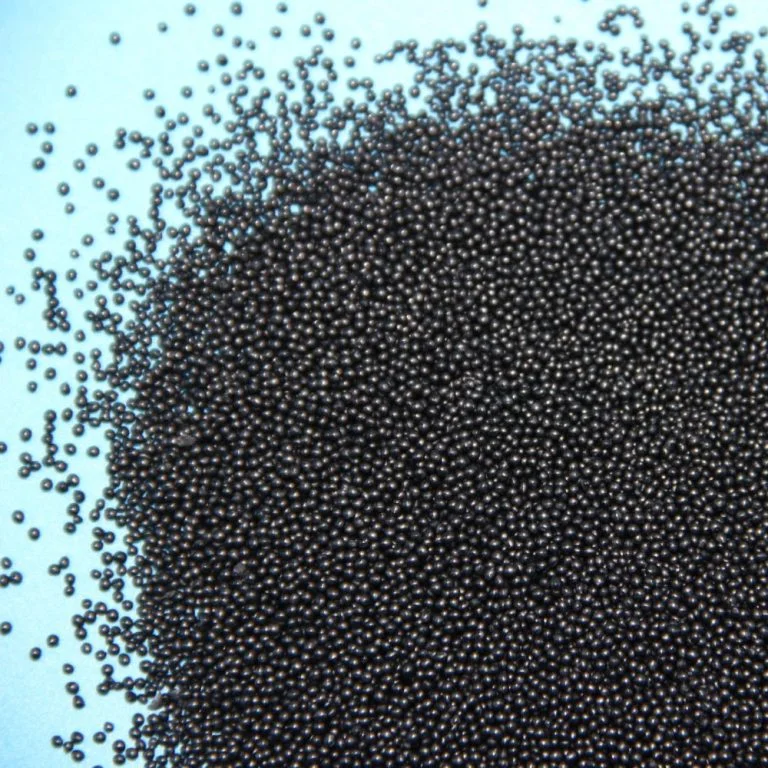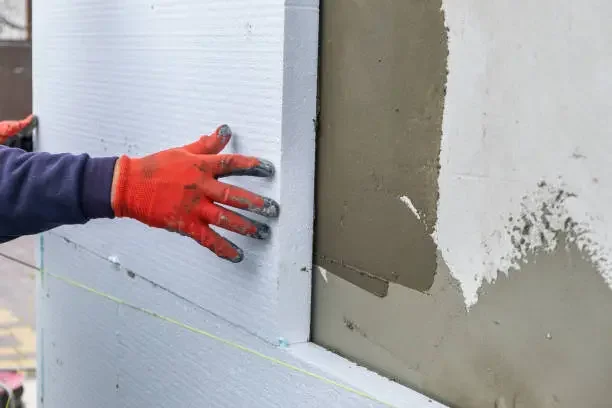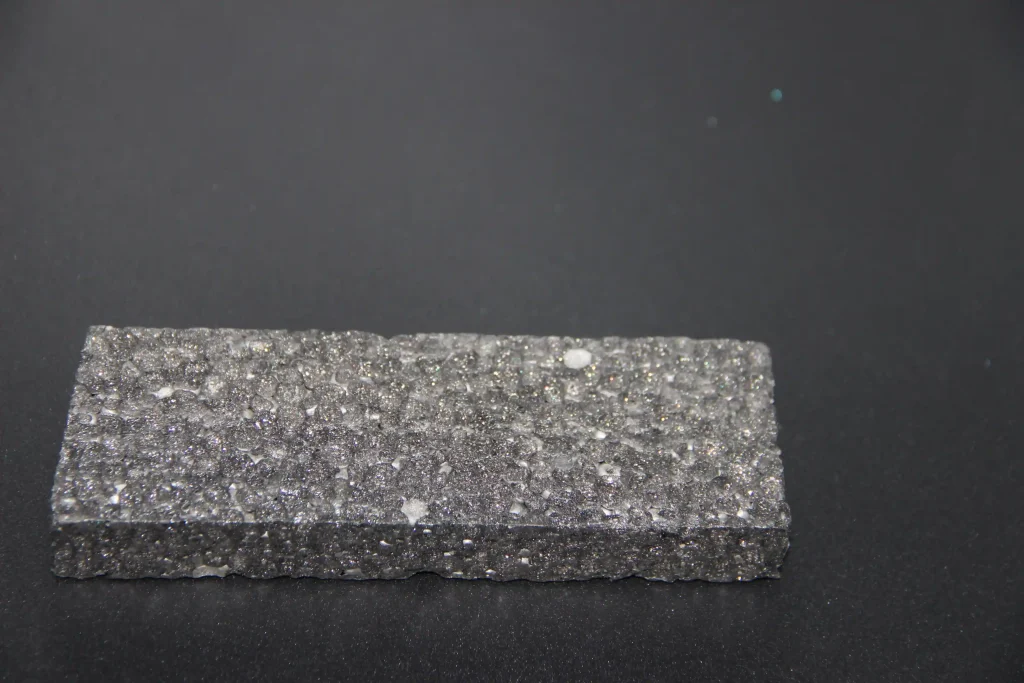Keeping buildings warm or cool efficiently is super important for saving energy, staying comfy indoors, and helping the planet. One awesome way to boost how well floors hold heat is by using an EPS insulation board. This light but powerful stuff is a top pick for both homes and businesses because it keeps heat in so well and doesn’t cost a fortune.

Overview of EPS Insulation in Building Applications
EPS, or Expanded Polystyrene, insulation is super handy and does a great job at keeping heat where it belongs in different parts of a building.
What is EPS Insulation Board
An EPS insulation board is a tough, firm foam created from tiny polystyrene beads that puff up. These boards are made by expanding the beads, letting them sit for a bit, shaping them, and then cutting them into the right sizes. The final product is steady in size, has an even thickness, and fights off heat really well.
Key Properties of EPS Thermal Insulation
EPS boards have some cool features that make them perfect for keeping buildings insulated:
- Doesn’t let heat pass through easily
- Can handle a lot of weight without breaking
- Keeps water out
- Super light to carry
- Simple to put in place
When it comes to keeping buildings cozy, HUASHENG’s EPS foam stuff stands out big time. Their products are amazing at stopping heat from escaping, which cuts down on energy use in homes and offices.
Common Uses of EPS in Residential and Commercial Flooring
You’ll often find EPS insulation board under concrete layers, screeds, or wooden floors to help trap heat. It’s also used between beams or under floor heating setups to stop heat from slipping away downward. This is common in brand-new builds as well as older places getting a makeover.
Mechanisms Behind Floor Thermal Efficiency
To get why EPS makes floors work better at holding heat, we need to look at how heat moves around in floor setups.
Heat Transfer Principles in Floor Structures
Floors can lose warmth by letting it seep into the ground or cooler spots below. If there’s no good insulation, a lot of energy just gets wasted. Heat can also sneak through building parts, making things less efficient.
The Role of Thermal Resistance in Preventing Heat Loss
Thermal resistance, often called R-value, shows how well something stops heat from moving. A bigger R-value means better heat-blocking power. EPS boards have a high R-value for their thickness because their tiny air pockets trap heat inside.
Benefits of Continuous Insulation Layers Beneath Flooring
Putting a solid layer of EPS under floors stops any gaps where heat could escape. This steady shield keeps the floor temperature even all over. It makes the building use less energy and feel more comfortable inside.
How EPS Insulation Board Improves Floor Performance
EPS boards do more than just block heat. They make floors work better in many ways.
Reduction of Heat Loss Through the Floor Slab
EPS acts like a wall between warm rooms and cold ground or subfloors. It stops heat from going down. This helps keep indoor spaces at a nice temperature all year. Plus, it means you don’t need to crank up heaters or air conditioners as much.
Enhanced Comfort Through Stable Indoor Temperatures
Floors with insulation don’t get chilly patches. The temperature stays pretty much the same all day. This makes rooms feel nicer, whether it’s freezing winter or hot summer.
Contribution to Energy Savings and Lower Utility Costs
Using less heating or cooling means smaller energy bills. Buildings become way more energy-smart. On top of that, cutting down energy use helps lower harmful gas emissions that hurt the environment.

Grades and Types of EPS Boards for Flooring Applications
There are different kinds of EPS made for specific needs like safety from fire, eco-friendly goals, or extra strong performance.
Common Grade EPS for Standard Use
Common grade stuff, like E-standard EPS, is used a lot for basic needs. It works well for packing electronics or insulating heat. The material sticks together nicely, stays the right size, and is tough. It doesn’t shrink or warp easily. This makes it great for regular home floors that don’t need to hold super heavy stuff.
Flame Retardant Grade for Enhanced Fire Safety
For places that need to follow strict fire rules, like apartment buildings or shops, Flame retardant grade B1 EPS gives extra safety. For example, B1 flame-retardant EPS particles with a density of 22kg/m³ have been used in green projects like GreenBuild Eco-city with great results.
Graphite Grade for Higher Thermal Performance
Graphite grade, like S-33, uses special stuff like natural flake graphite to soak up heat. Its thermal conductivity is below 0.033W/M.K, which is over 20% better than regular EPS. This makes it perfect for super cold areas or buildings trying to meet tough energy-saving rules like passive house standards.
Environmental Protection Grade for Sustainable Projects
Builders who care about the earth can pick eco-friendly options like REPS materials. With REPS, a physical process is used instead of chemicals, saving over 20% of energy. It can also be made to fit specific needs, which is a big plus for green projects.
Carbon Black Grade for UV Resistance and Strength
In spots that get a lot of sunlight during building, like near windows, Carbon black grade EPS holds up better against UV damage. It stays strong and doesn’t break down easily, even when exposed to light for a while.
Customized REPS Solutions for Specific Project Needs
Customized REPS can be tweaked for special jobs. It’s made to match exact needs for things like density or shape. This makes it ideal for stuff like underfloor heating or raised floors where unique setups are needed.
Installation Considerations for Maximizing Efficiency
Getting EPS insulation board set up the right way makes sure it works great for a long time.
Proper Placement and Layering Techniques
How you install it depends on the kind of floor you’ve got:
Below Concrete Slabs or Screeds
Lay the boards on a flat, packed-down base. Make sure the joints don’t line up. Then pour the concrete on top. This is a common trick for floors built right on the ground.
Between Joists or Subfloor Systems
For wooden floors, cut the panels to fit tight between beams. This stops air from sneaking through gaps. Depending on the weather where you are, you might add a layer to block vapor too.
Moisture Management and Vapor Barriers Compatibility
EPS naturally keeps water out because of its tight structure. But pairing it with the right vapor shields stops wetness from building up. This is really important over damp ground.
Load-Bearing Capacity and Compressive Strength Factors
EPS boards come in different strengths for all kinds of weight. Some are good for light foot traffic in homes, while others can handle heavy machines in factories. Always pick the right thickness based on local rules and how much weight the floor will hold.

Long-Term Performance and Durability of EPS Boards
Besides working well at first, EPS stays reliable for years, which is a big reason to choose it.
Resistance to Moisture, Mold, and Degradation Over Time
EPS doesn’t rot or grow mold since it’s made of stuff that doesn’t break down easily. It fights off water too, so it keeps working well even after sitting under floors for ages.
Maintaining R-Value Stability Under Load Conditions
Even when floors above press down hard, EPS holds its shape. It sticks together well and doesn’t shrink or squash. This means its heat-blocking power stays steady for many years, unlike some fluffy insulations that sag over time.
HUASHENG: Trusted Supplier of Quality EPS Insulation Products
Lanzhou HUASHENG New Materials Co., Ltd is a leader in creating awesome eps thermal insulation tech. They’ve got a huge range of products made for today’s building needs.
Comprehensive Range of EPS Grades Offered by HUASHENG
HUASHENG has something for everyone. Their Common grade E-standard stuff is cheap and works well. Flame retardant B1-grade keeps things safe from fire. Graphite-enhanced S-33 is top-notch for holding heat. Environmental protection REPS helps with green building goals. Carbon black grades stand up to UV light. And customized REPS fits special project needs perfectly.
Commitment to Consistent Product Quality and Innovation
HUASHENG is all about making better stuff. They keep trying new ideas and using the latest tools. Their products lead the pack in being tough, eco-friendly, and meeting rules worldwide. Many of their clients’ projects even earn big awards like LEED Gold thanks to HUASHENG’s work.
FAQs:
Q1: What makes EPS insulation board better than other types like fiberglass?
A: Fiberglass can slump over time or soak up water, which makes it less useful. But EPS keeps its form and heat-blocking power. Its tight structure also stops water from getting in, which is a big win.
Q2: Can I use graphite-grade EPS under heated floors?
A: Totally! Graphite grade like S-33 is awesome at keeping heat in. It’s perfect for under floor heating since it pushes warmth up where you need it. Its thermal conductivity is under 0.033W/M.K, which is really good.
Q3: Is recycled or eco-friendly version like REPS suitable for structural flooring?
A: Yes, for sure! REPS is strong and tough, so it works great even for floors that need to hold weight. Plus, it helps your project meet green goals since it’s made with recyclable stuff and follows global standards like PS category 6 rules.






